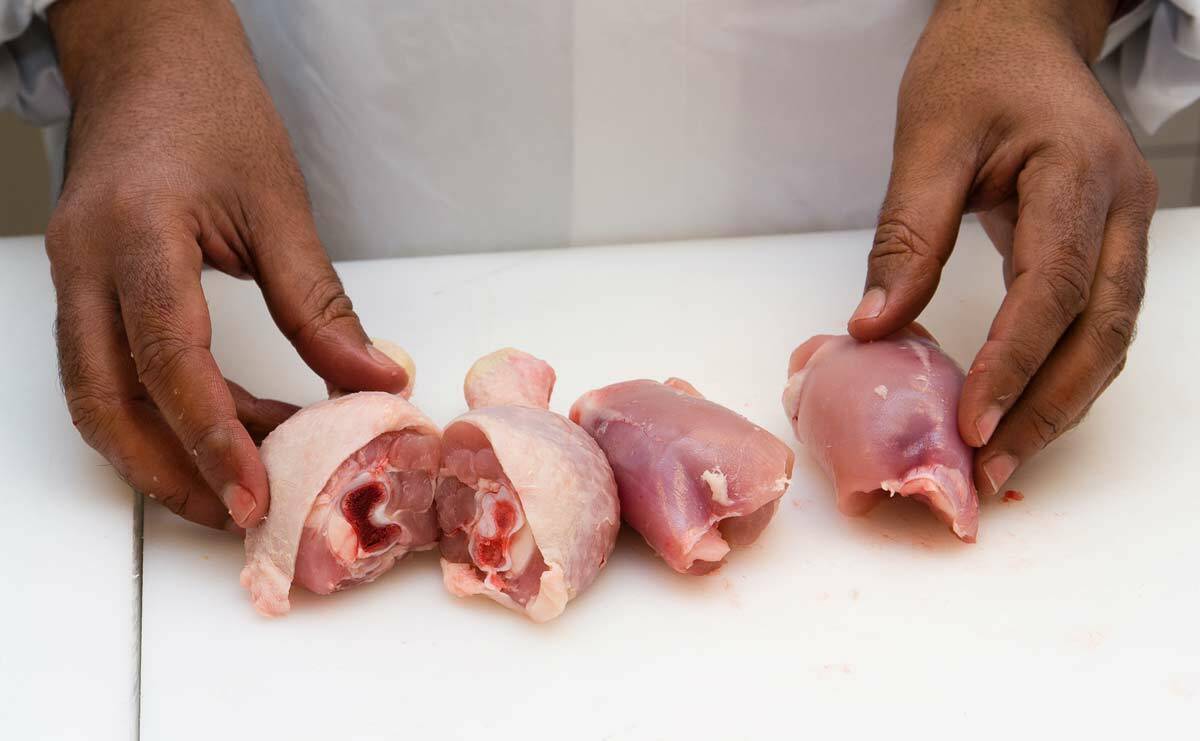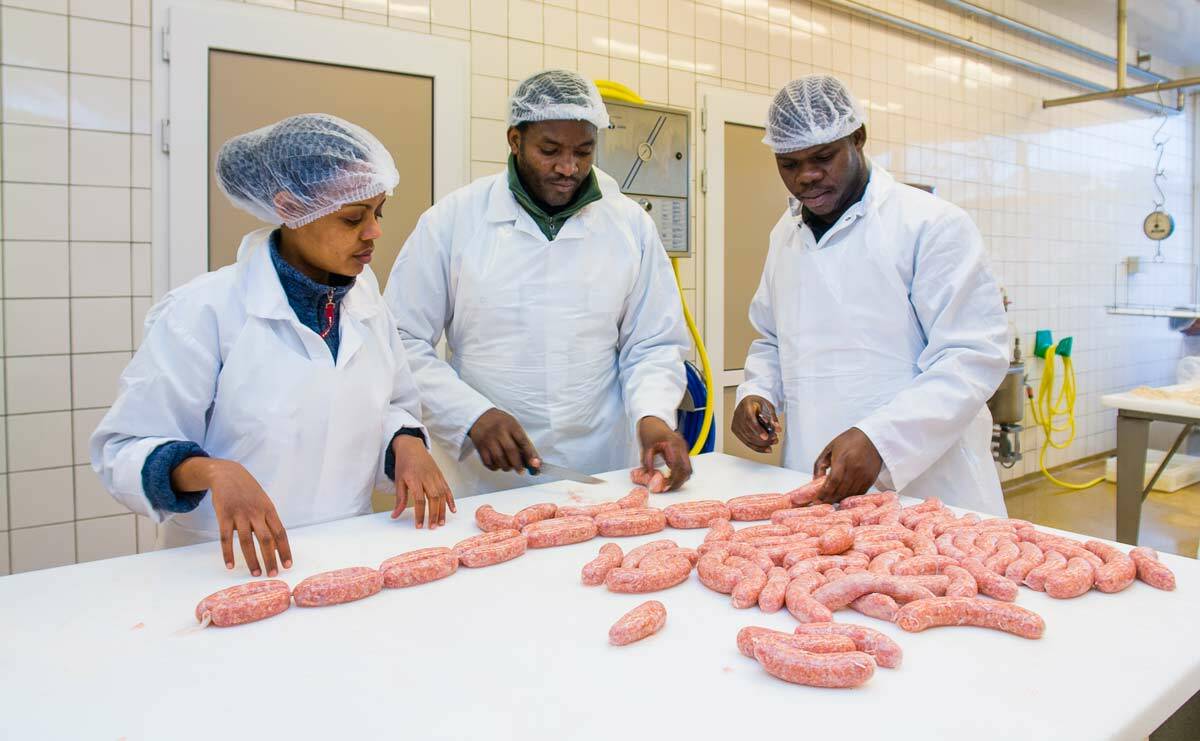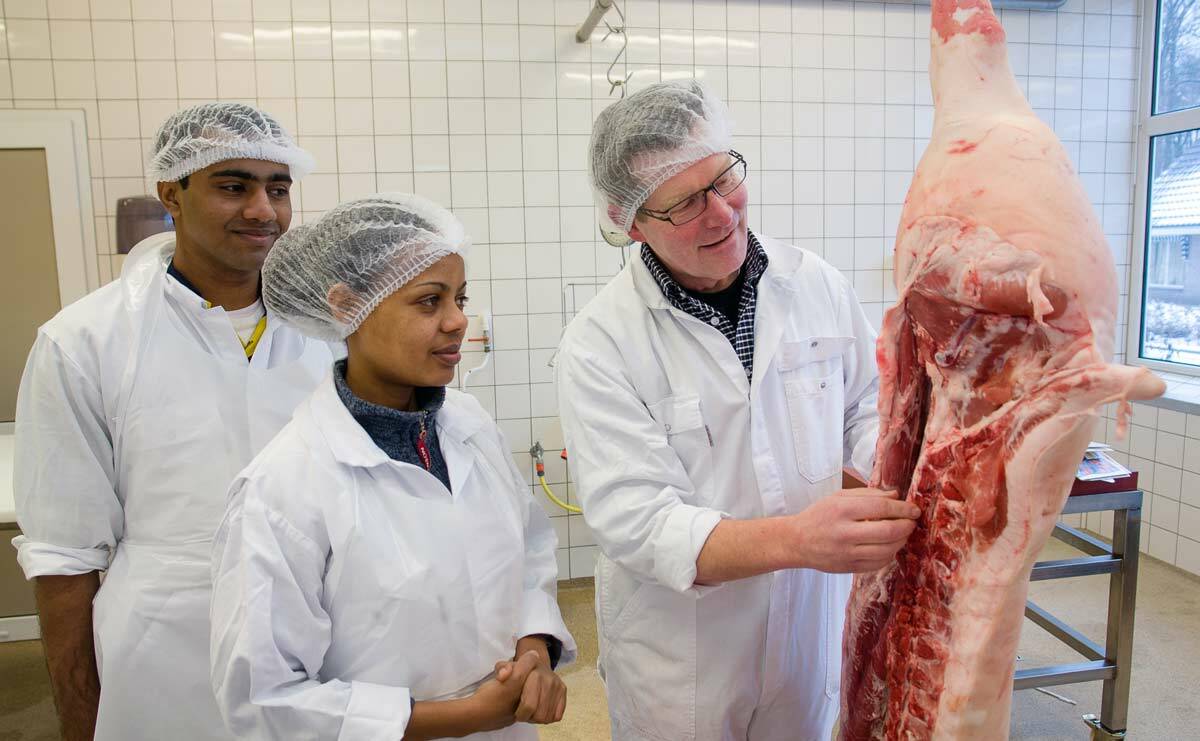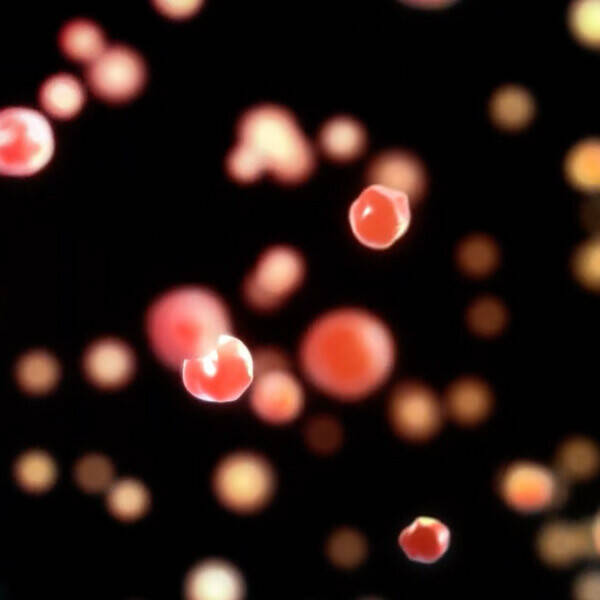When managing a company it is important to prevent the outbreak of diseases. But what is the best way to implement this in your business and the whole chain? And how can you detect the first signs of such diseases? In the study Product quality, food safety and outbreak management students get answers to these questions.

The study is made for people who work in the food chain, whether it is at the start of the end of the chain. These could be people who are involved with legislation, laboratory work, people who supervise farms, but also the staff at slaughterhouses. The ultimate goal is to make parties around the farm, more conscious about what happens in the chain and where there is room for improvement.
An important part of the course is outbreak management. This focusses on the question how you best handle the outbreak of diseases and how to prevent them. Roy Marissen is one of the trainers who is part of the team who teaches this course. “We call them list A diseases, also called notifiable diseases. These are disease that are potentially transferable onto people. These are for example the bird flu and swine fever.”
To prevent these diseases from spreading at all, product quality and food safety as part of the course are an important start. “The goal is to get food safety and thereby human health to a higher standard in the concerning countries. For example: how do you prevent people getting sick from salmonella infections? But you can also focus on feed, because in some countries animal feed can be infected by salmonella. If that is the case, the infection goes from the chicken, to the slaughterhouse where it can spread and subsequently to the people who eat the chicken they buy at the supermarket.”
The problem in several countries where trainees come from, is that there is no clear idea about who is responsible for possible outbreaks or infection. “Last February, we taught a course in Mozambique. The group consisted of policy makers, employees of slaughterhouses, extension workers of the government who carry out inspections at slaughterhouses or farms, but also farmers. During the course, I asked them who is responsible if salmonella found in a chicken. They immediately started pointing at each other, because there was no clear idea about responsibilities.”
The following steps in the course focus on getting clear what the current situation is, and how to get the various parties in the chain to take responsibility for that part for which they are responsible. “In the Netherlands, we made sure the rules and responsibilities are very clear. For example, if you run a poultry farm, you are only allowed to buy your feed at a supplier who carries a certain certificate which guarantees their food is safe. The slaughterhouses are also only allowed to work with farms that have certificates stating they follow to the rules and procedures. This is called integrated chain management: everyone knows the rules and knows who is responsible and thus accountable for what step in the chain.”
Next to the courses Roy and his colleagues give trainings abroad, like Mozambique, people also travel to Barneveld to follow the program. This is a three-week course, in which the prevention and management of outbreaks is an important part. “We start by stating the diseases that they can encounter, the list A diseases I mentioned. And we also teach them how to prevent them by improving the food safety and product quality by establishing and writing up clear rules and everyone’s responsibilities in the chain. Another important part of the course is showing the attendees how to detect diseases and possible problems in food safety.”
As is the case in all the other courses at ATCI there is a big focus on gaining practical knowledge by following the learning by doing principle. The students get time in the feed factory, to learn about the most important points of focus in the field of food safety. Next to this, there is a post mortem for poultry, in which they get an up-close look in the inside of a sick chicken to recognize the disease in the body. “We also visit the NVWA, the Dutch Food and Consumer Product Safety Authority, so they can see how they analyze consumer products. And we also focus on biosecurity: how to prevent diseases from entering companies on a very practical level. So that is about cleaning and disinfecting for example.”
The program is intensive and filled with practical assignments and lessons. “At the end of the course, the students have to give a presentation about a public health related disease that is a problem in their country. For example salmonella in broilers, anthrax and tuberculosis in cows or aflatoxin in milk, which are dangerous toxins in milk that can transfer to humans. They have to show how they will use their gained knowledge to control these diseases within the chain.”
Next to this specific way of forming new rules and procedures, the students are taught about the best way to transfer the knowledge and suggestions for improvement to all the involved parties. “That is about communication with the various people in the process. But also about how you can find possible ways to finance the training of people. The knowledge and awareness has to be spread across the whole chain and then expanded across the country. In that way, problems like outbreaks of diseases can hopefully be prevented.”





When managing a company it is important to prevent the outbreak of diseases. But what is the best way to implement this in your business and the whole chain? And how can you detect the first signs of such diseases? In the study Product quality, food safety and outbreak management students get answers to these questions.
The study is made for people who work in the food chain, whether it is at the start of the end of the chain. These could be people who are involved with legislation, laboratory work, people who supervise farms, but also the staff at slaughterhouses. The ultimate goal is to make parties around the farm, more conscious about what happens in the chain and where there is room for improvement.
An important part of the course is outbreak management. This focusses on the question how you best handle the outbreak of diseases and how to prevent them. Roy Marissen is one of the trainers who is part of the team who teaches this course. “We call them list A diseases, also called notifiable diseases. These are disease that are potentially transferable onto people. These are for example the bird flu and swine fever.”
To prevent these diseases from spreading at all, product quality and food safety as part of the course are an important start. “The goal is to get food safety and thereby human health to a higher standard in the concerning countries. For example: how do you prevent people getting sick from salmonella infections? But you can also focus on feed, because in some countries animal feed can be infected by salmonella. If that is the case, the infection goes from the chicken, to the slaughterhouse where it can spread and subsequently to the people who eat the chicken they buy at the supermarket.”
The problem in several countries where trainees come from, is that there is no clear idea about who is responsible for possible outbreaks or infection. “Last February, we taught a course in Mozambique. The group consisted of policy makers, employees of slaughterhouses, extension workers of the government who carry out inspections at slaughterhouses or farms, but also farmers. During the course, I asked them who is responsible if salmonella found in a chicken. They immediately started pointing at each other, because there was no clear idea about responsibilities.”
The following steps in the course focus on getting clear what the current situation is, and how to get the various parties in the chain to take responsibility for that part for which they are responsible. “In the Netherlands, we made sure the rules and responsibilities are very clear. For example, if you run a poultry farm, you are only allowed to buy your feed at a supplier who carries a certain certificate which guarantees their food is safe. The slaughterhouses are also only allowed to work with farms that have certificates stating they follow to the rules and procedures. This is called integrated chain management: everyone knows the rules and knows who is responsible and thus accountable for what step in the chain.”
Next to the courses Roy and his colleagues give trainings abroad, like Mozambique, people also travel to Barneveld to follow the program. This is a three-week course, in which the prevention and management of outbreaks is an important part. “We start by stating the diseases that they can encounter, the list A diseases I mentioned. And we also teach them how to prevent them by improving the food safety and product quality by establishing and writing up clear rules and everyone’s responsibilities in the chain. Another important part of the course is showing the attendees how to detect diseases and possible problems in food safety.”
As is the case in all the other courses at ATCI there is a big focus on gaining practical knowledge by following the learning by doing principle. The students get time in the feed factory, to learn about the most important points of focus in the field of food safety. Next to this, there is a post mortem for poultry, in which they get an up-close look in the inside of a sick chicken to recognize the disease in the body. “We also visit the NVWA, the Dutch Food and Consumer Product Safety Authority, so they can see how they analyze consumer products. And we also focus on biosecurity: how to prevent diseases from entering companies on a very practical level. So that is about cleaning and disinfecting for example.”
The program is intensive and filled with practical assignments and lessons. “At the end of the course, the students have to give a presentation about a public health related disease that is a problem in their country. For example salmonella in broilers, anthrax and tuberculosis in cows or aflatoxin in milk, which are dangerous toxins in milk that can transfer to humans. They have to show how they will use their gained knowledge to control these diseases within the chain.”
Next to this specific way of forming new rules and procedures, the students are taught about the best way to transfer the knowledge and suggestions for improvement to all the involved parties. “That is about communication with the various people in the process. But also about how you can find possible ways to finance the training of people. The knowledge and awareness has to be spread across the whole chain and then expanded across the country. In that way, problems like outbreaks of diseases can hopefully be prevented.”
